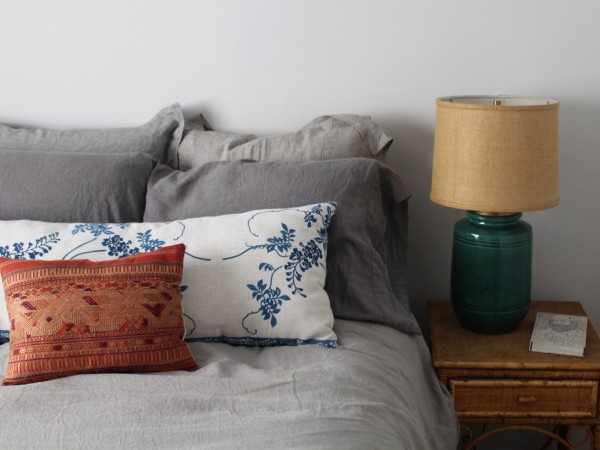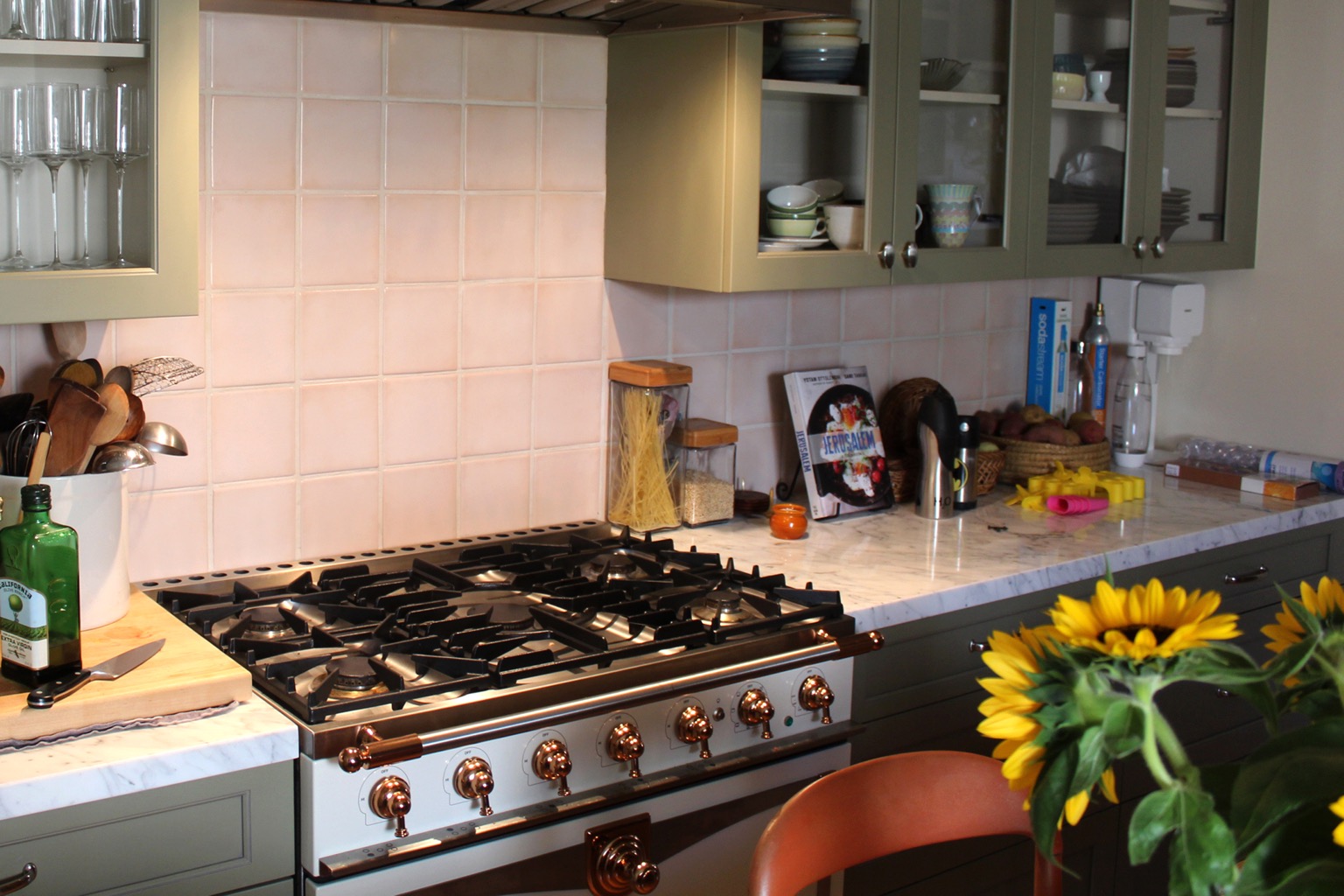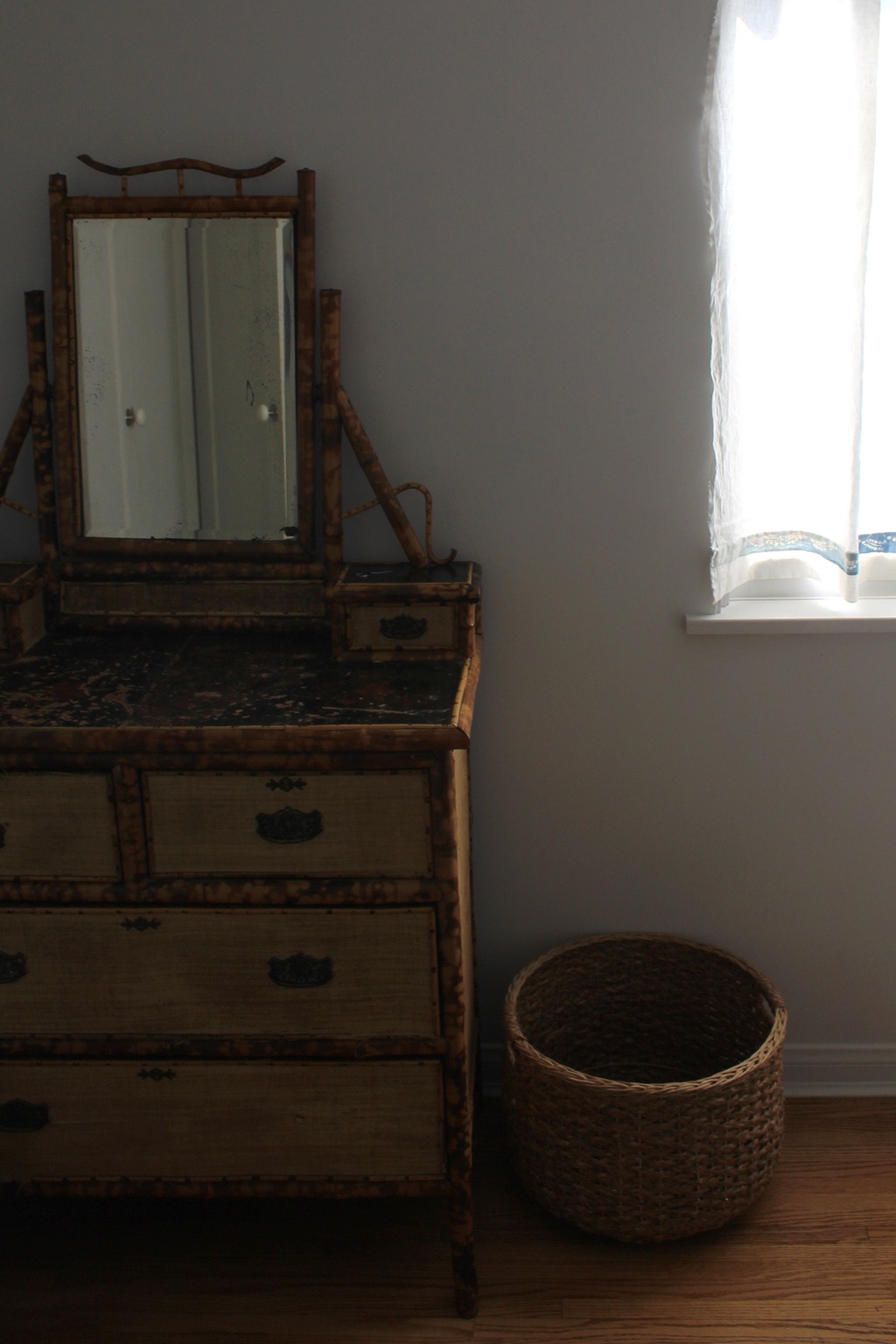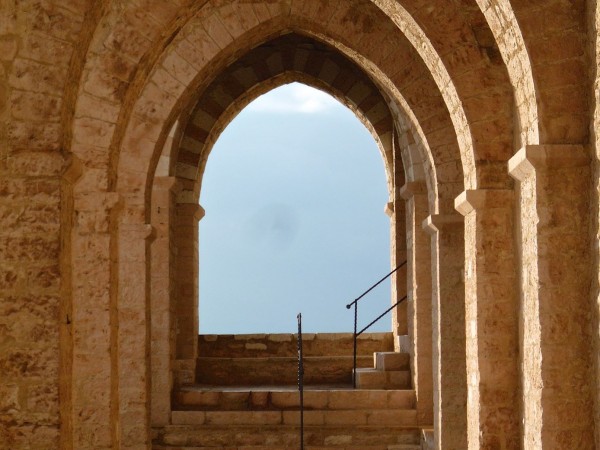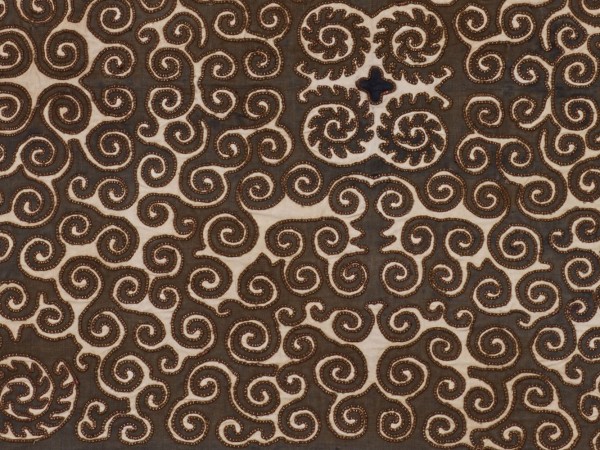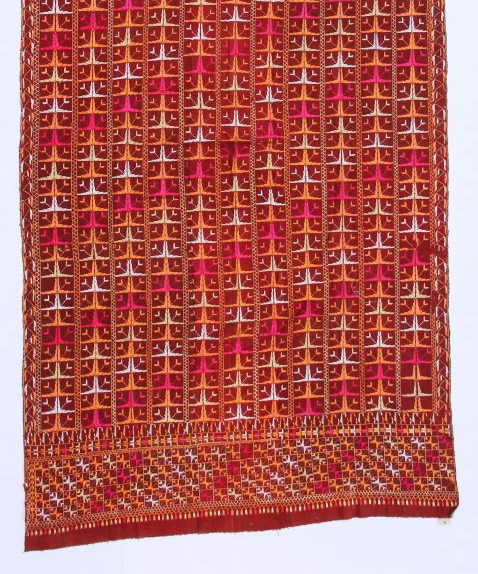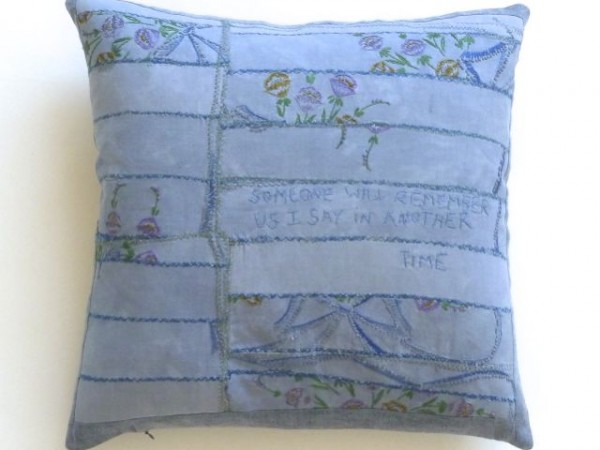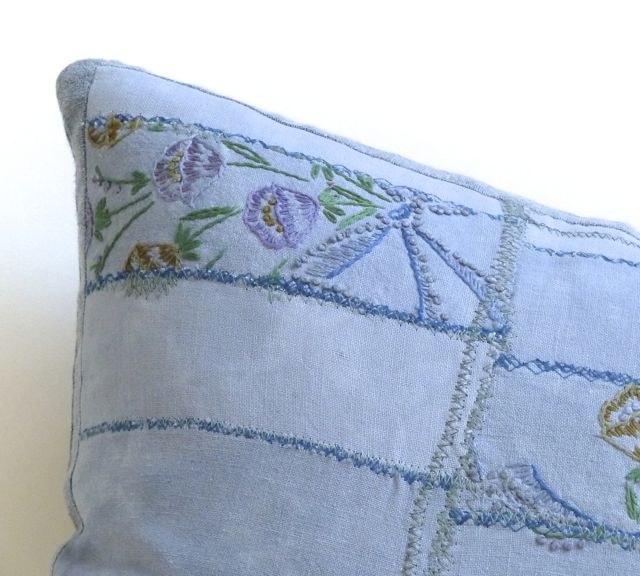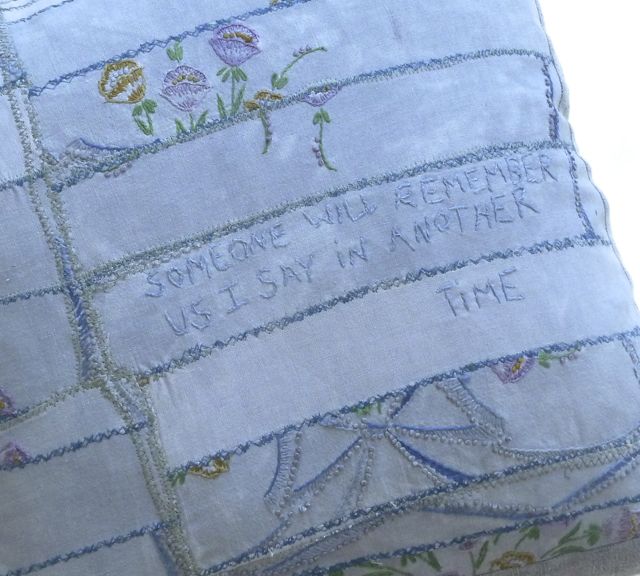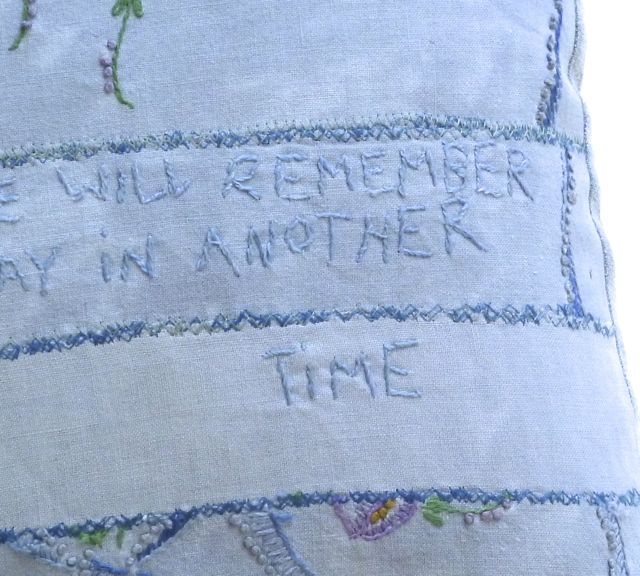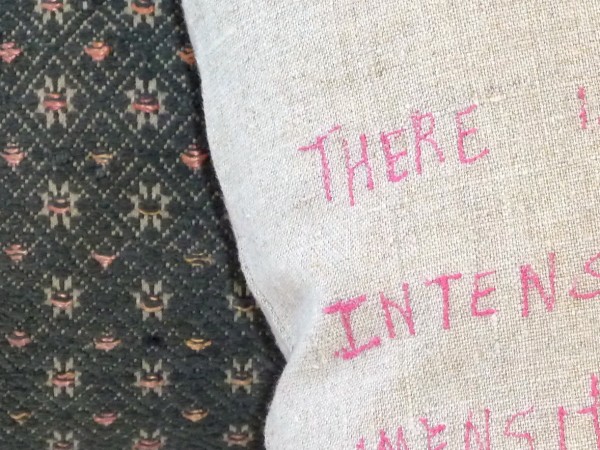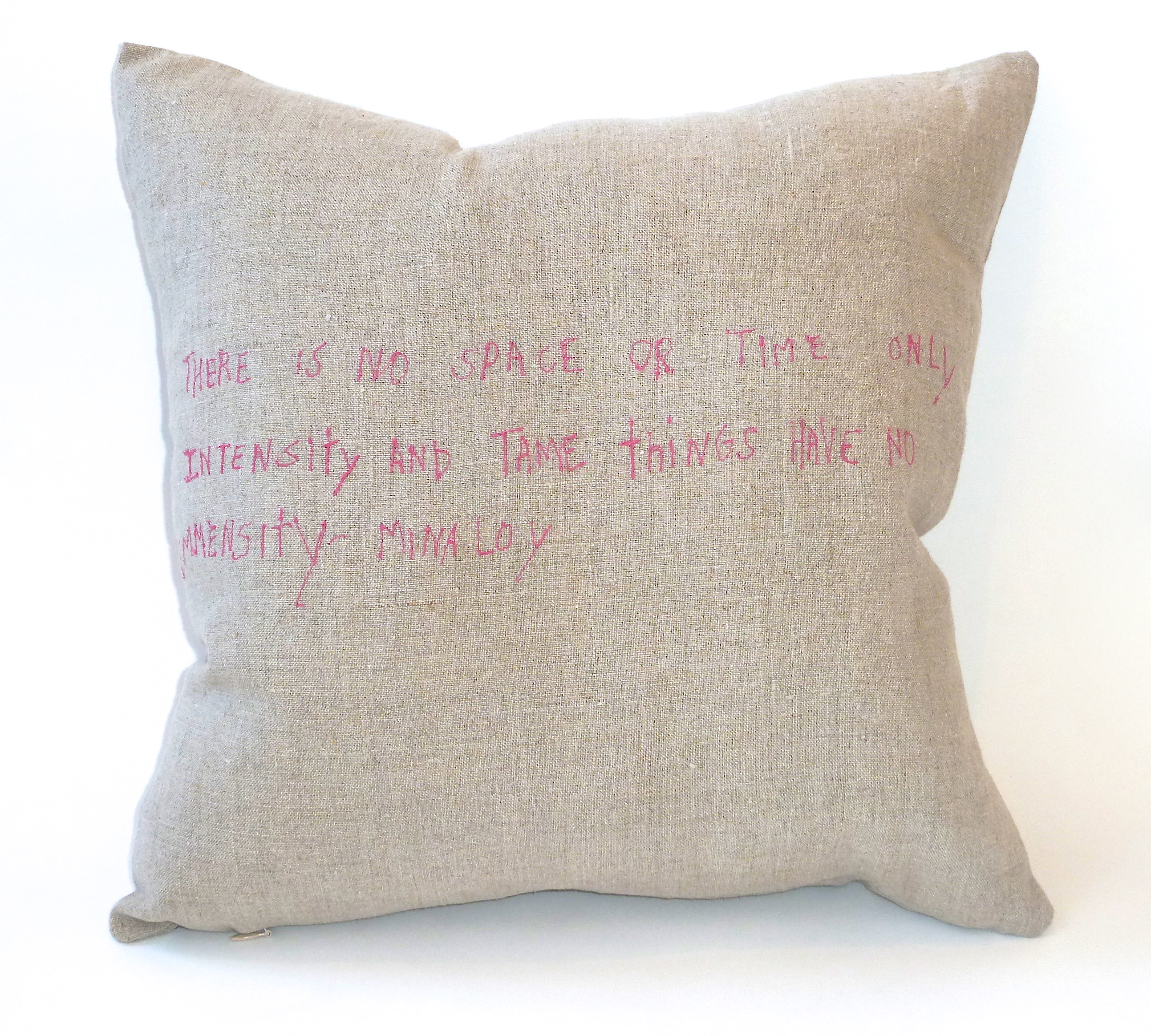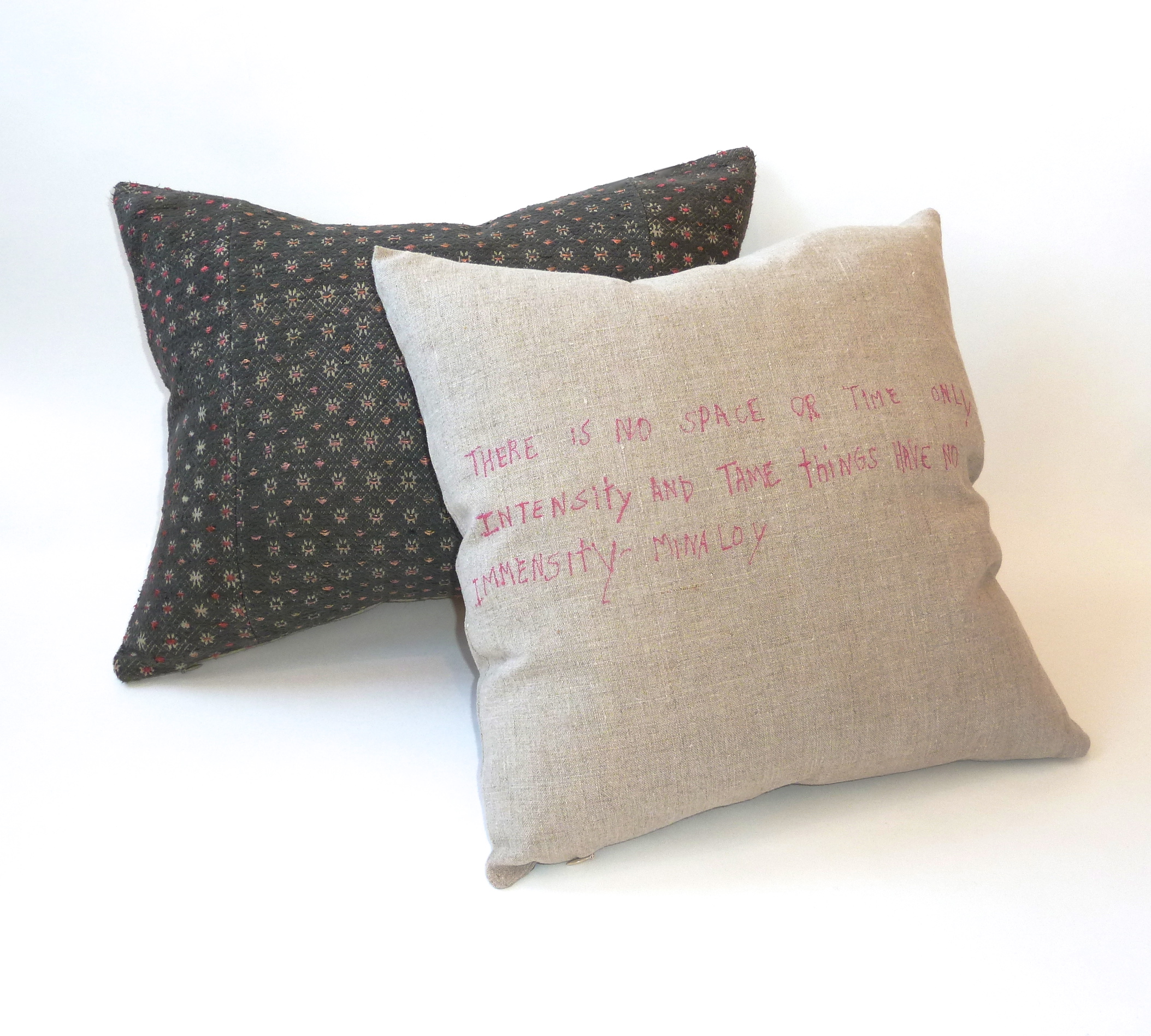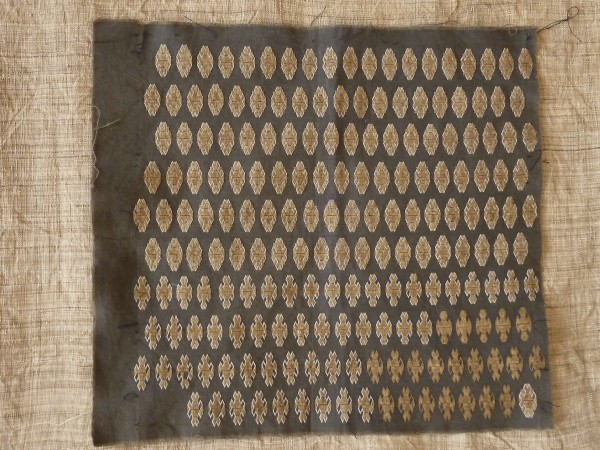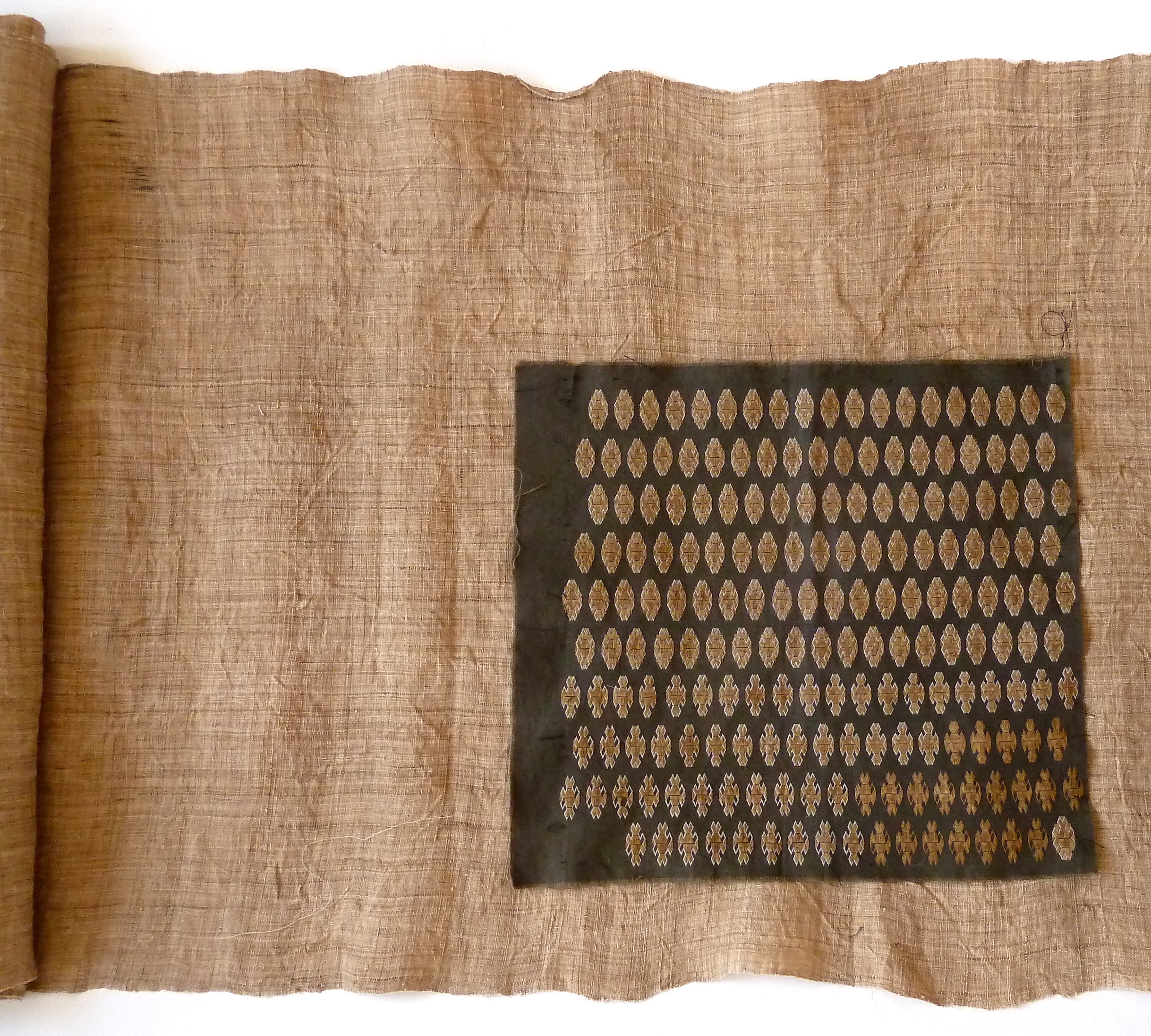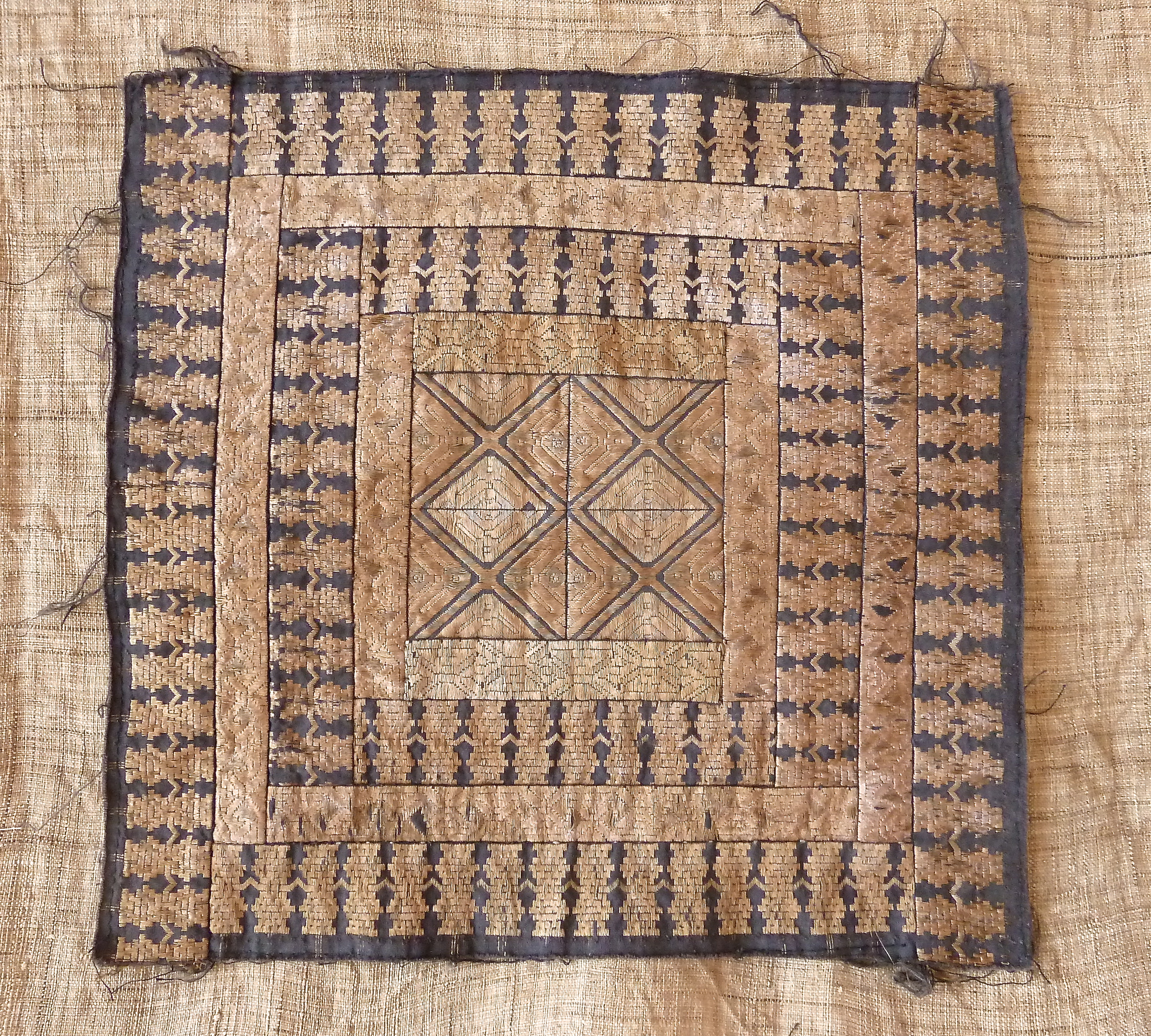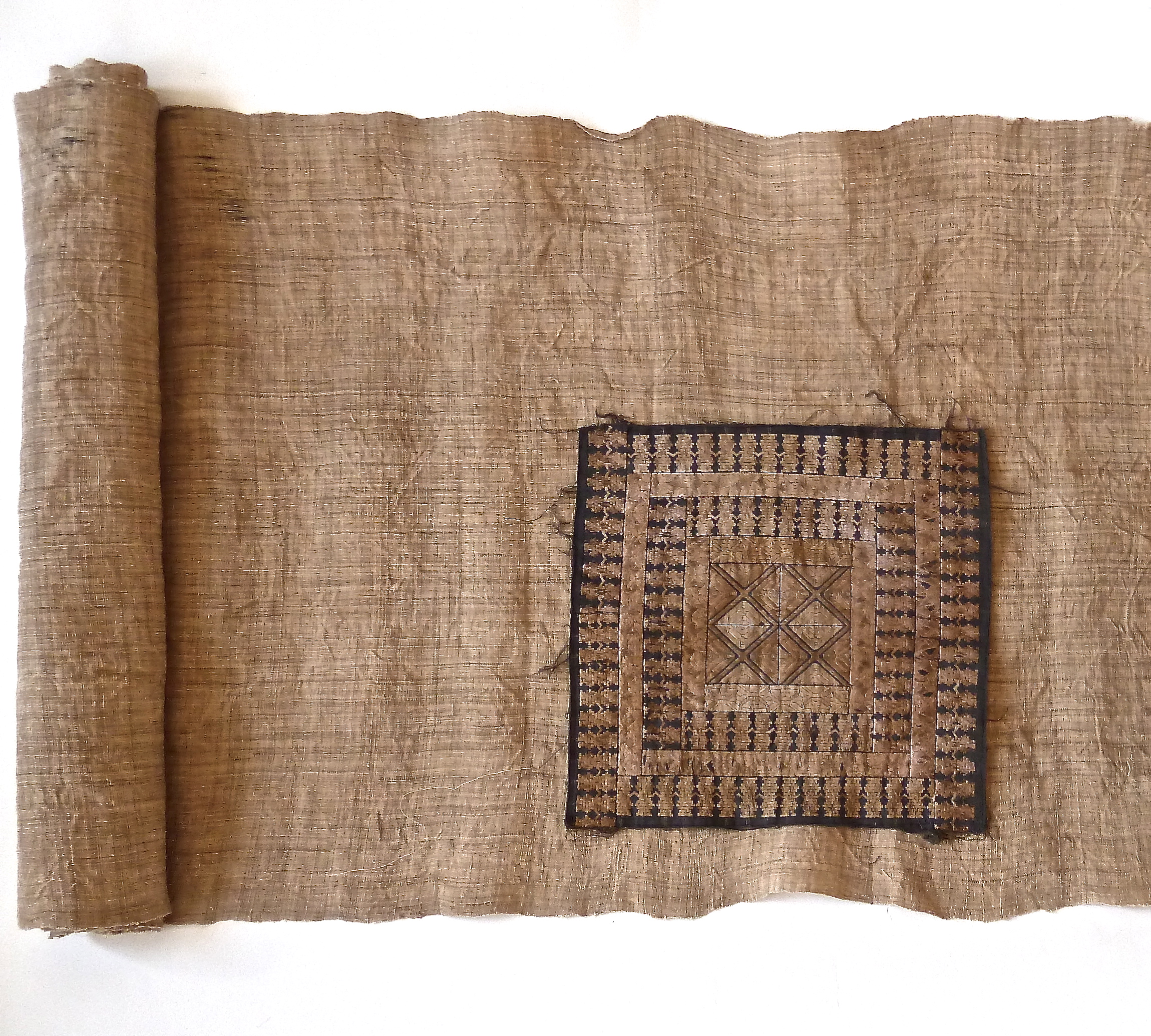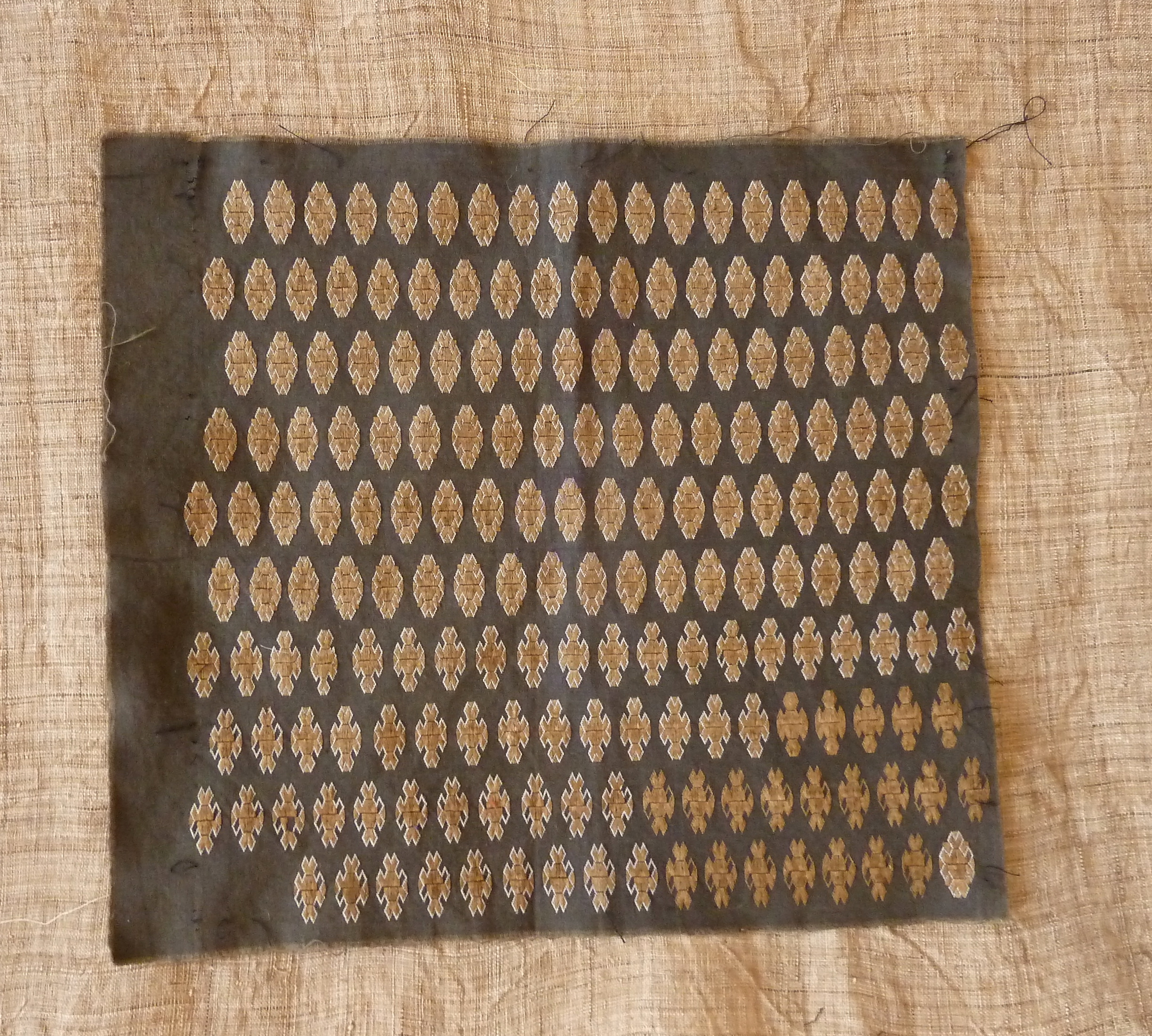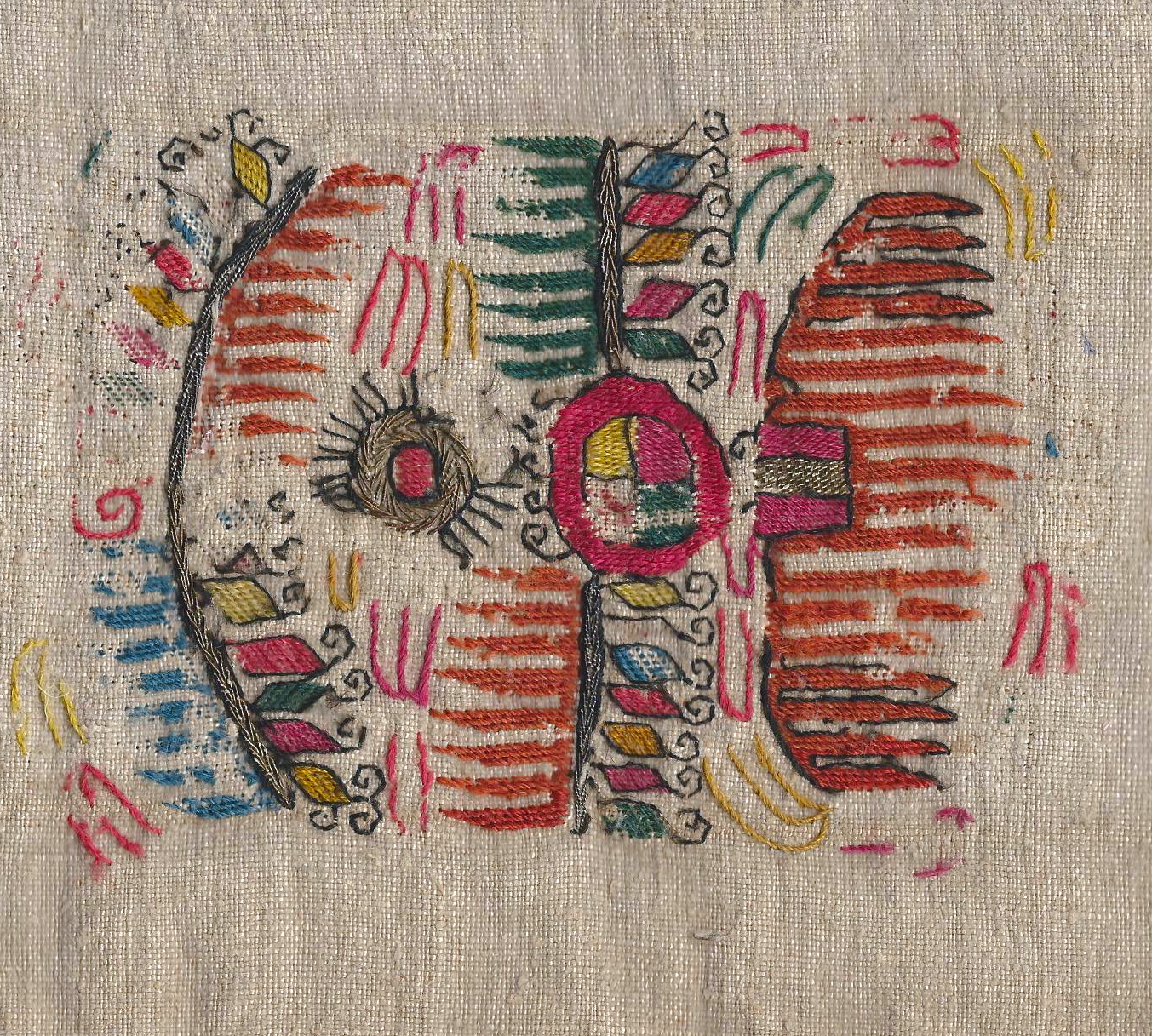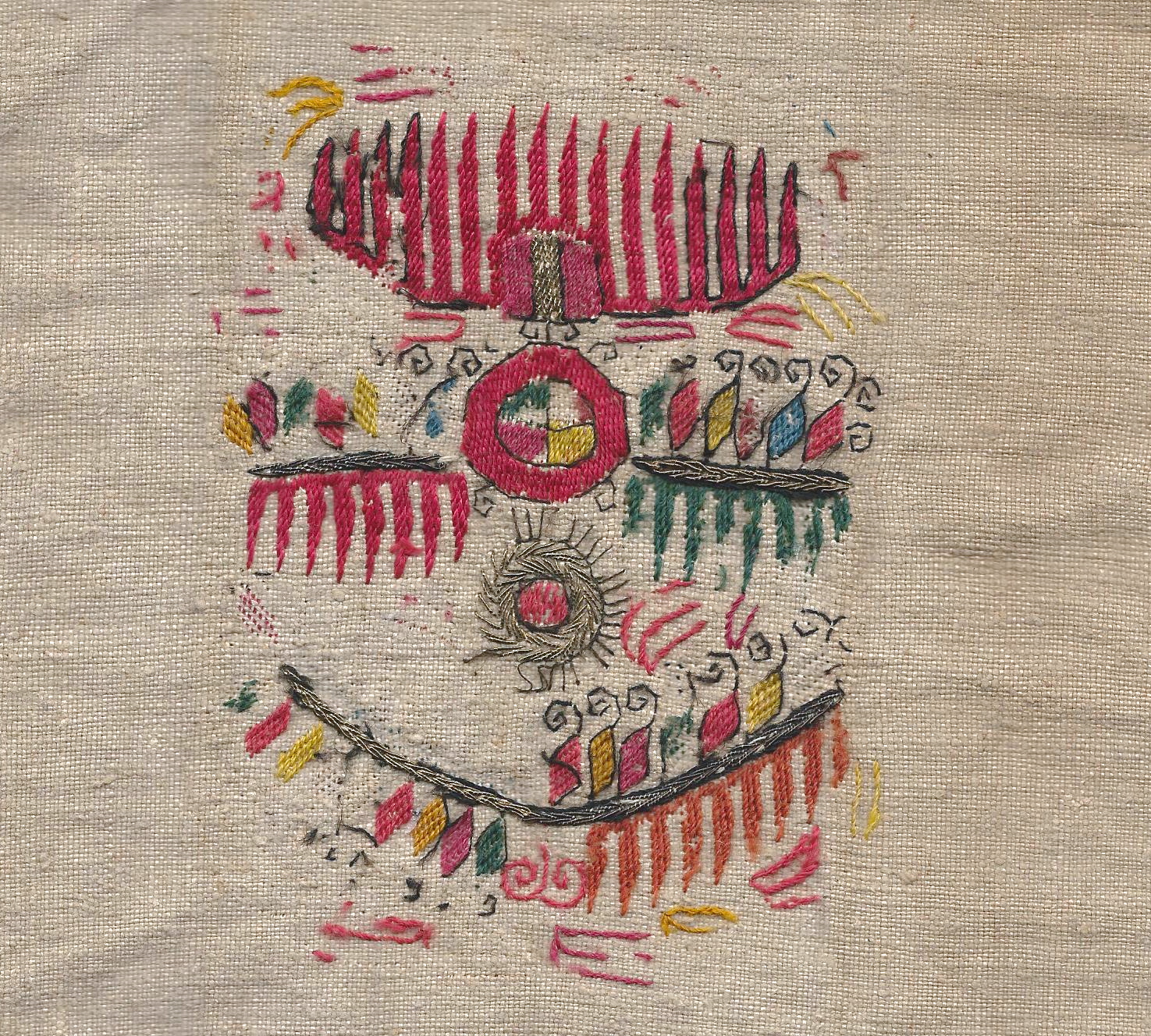Posts from the ‘Design’ Category
The contractor and their guys were back today finishing up the punch list so I took some detail shots to avoid tools and paint containers. The Master bedroom is waiting for the closet doors that span one wall, so as soon as that is finished– I’ll do some shots in there along with the lighting being installed in the MA bath and Hallway. –Brass with crystal bead covers.
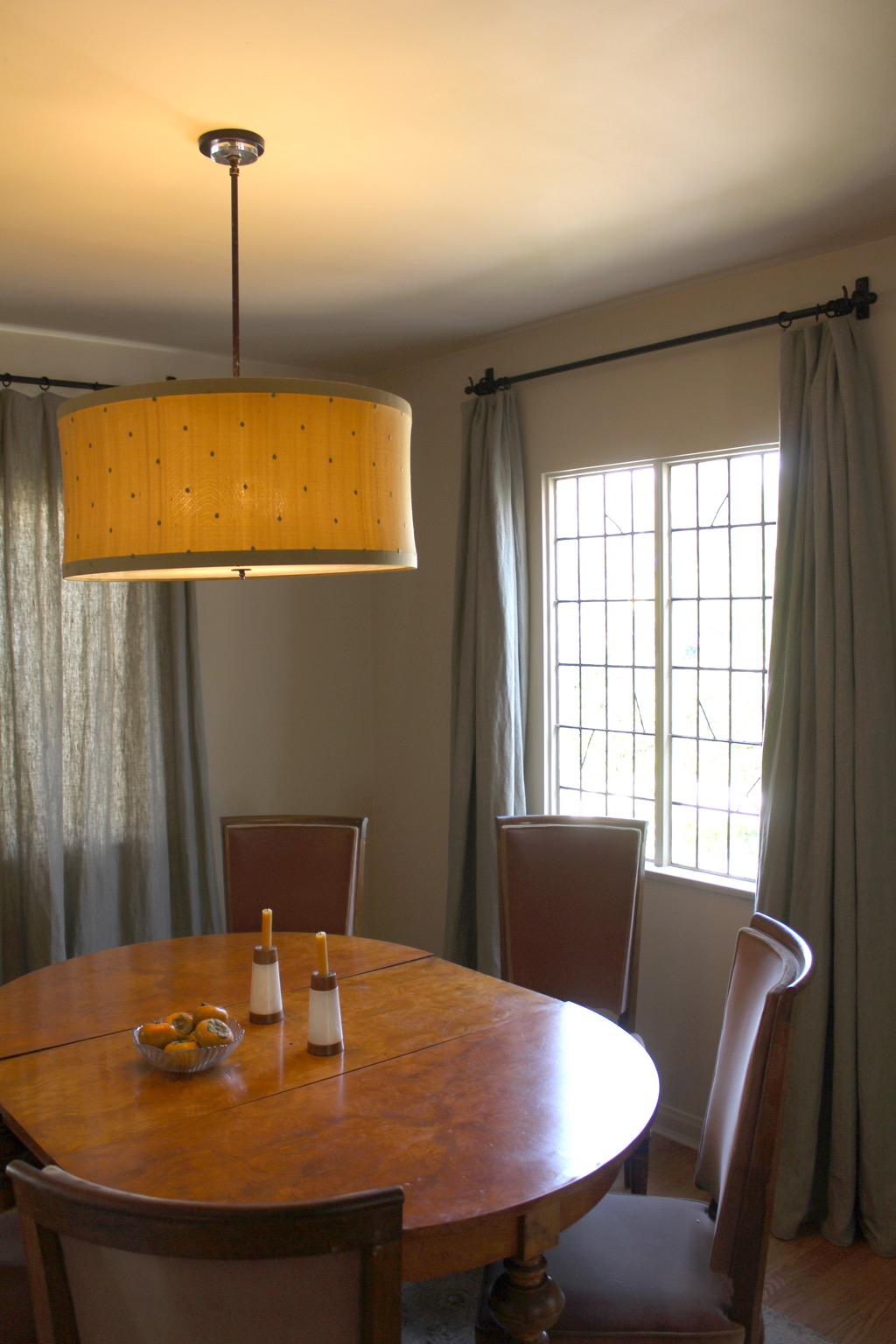
Dining Room– a found wonkey 19th C table with multiple leaves with French deco chairs reupholstered in a rose velvet with contrasting taupe welt. Loose weave blue celadon grey linen curtains with cream muslin lining to keep a consistent exterior house color when closed– Simeona Leona. A Mid C Italian Silk with embroidered dots drum pendent.
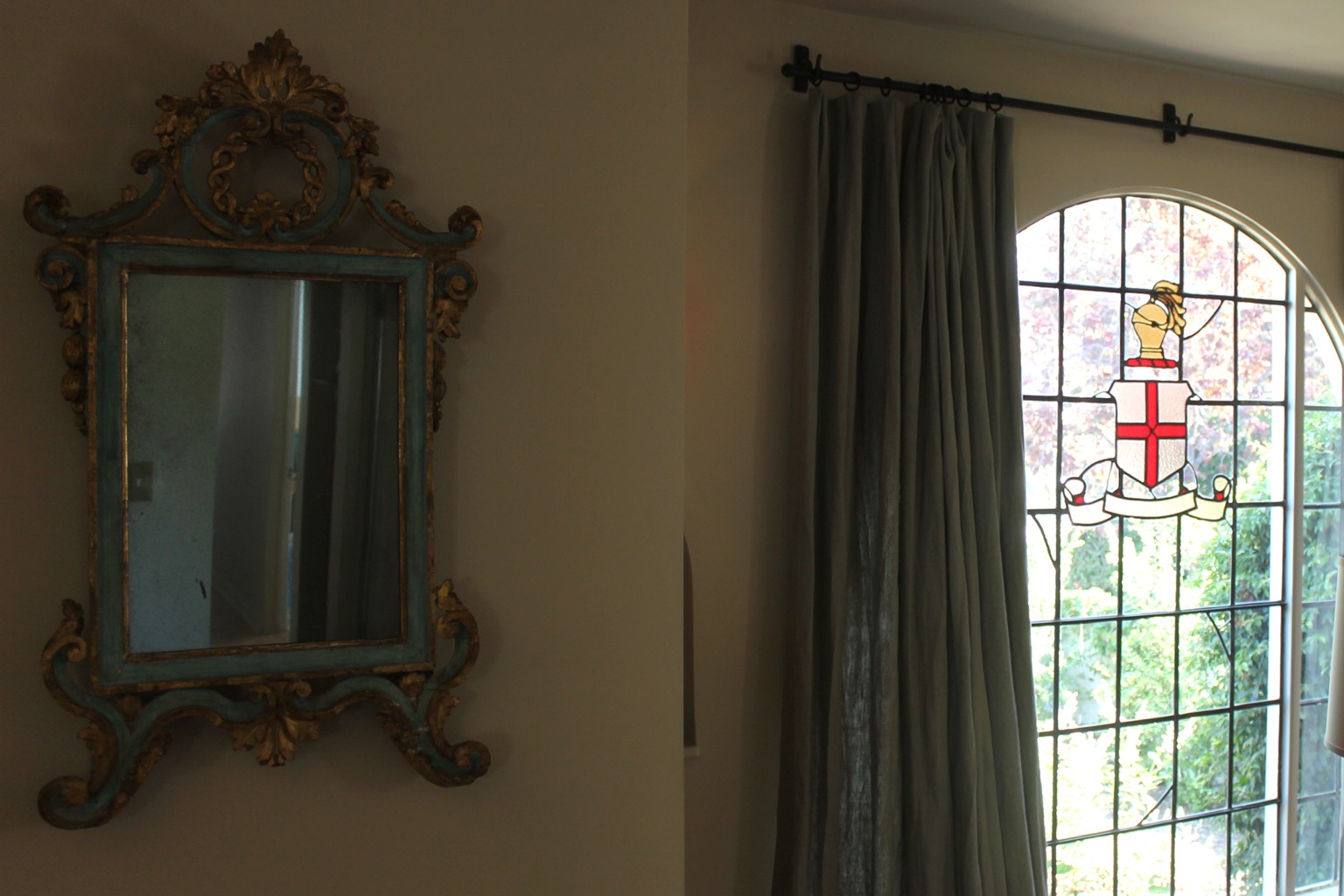
18th C Italian mirror found at an estate sale contrasts with the original crest of arms in the living room window with storybook broken-window details. Curtains same as the adjacent dining room. Custom curtain hardware with hook brackets and acorn finials by Mak Made.

Brass sconces circle the living room –assembled from standard lamp parts with mica-shades. The 1920’s bungalow had been updated in the 1970’s with a stone wall fireplace and an oversized picture window that looked out on to a concrete block fence. Once the stones were removed the remains of a small window was found opposite the larger 1970’s window. The large window was removed and a window was added to match the original. New glass was made to repeat the storybook broken-glass motif.

Brass tortoise bibelots found in Beijing– act as door nobs for cabinet doors in the living room. The set of bi-fold doors above them are waiting for their gold leaf frame details and mirror panels.

Carrera countertops with custom kitchen cabinets in pea green. Pink tiles for the back splash–found at the Habitat for the humanity Re-store– complement the copper details of the La Canche Stove. A central island butcher block countertop table custom by Mak Made with vintage stools as found from Design Utopia.
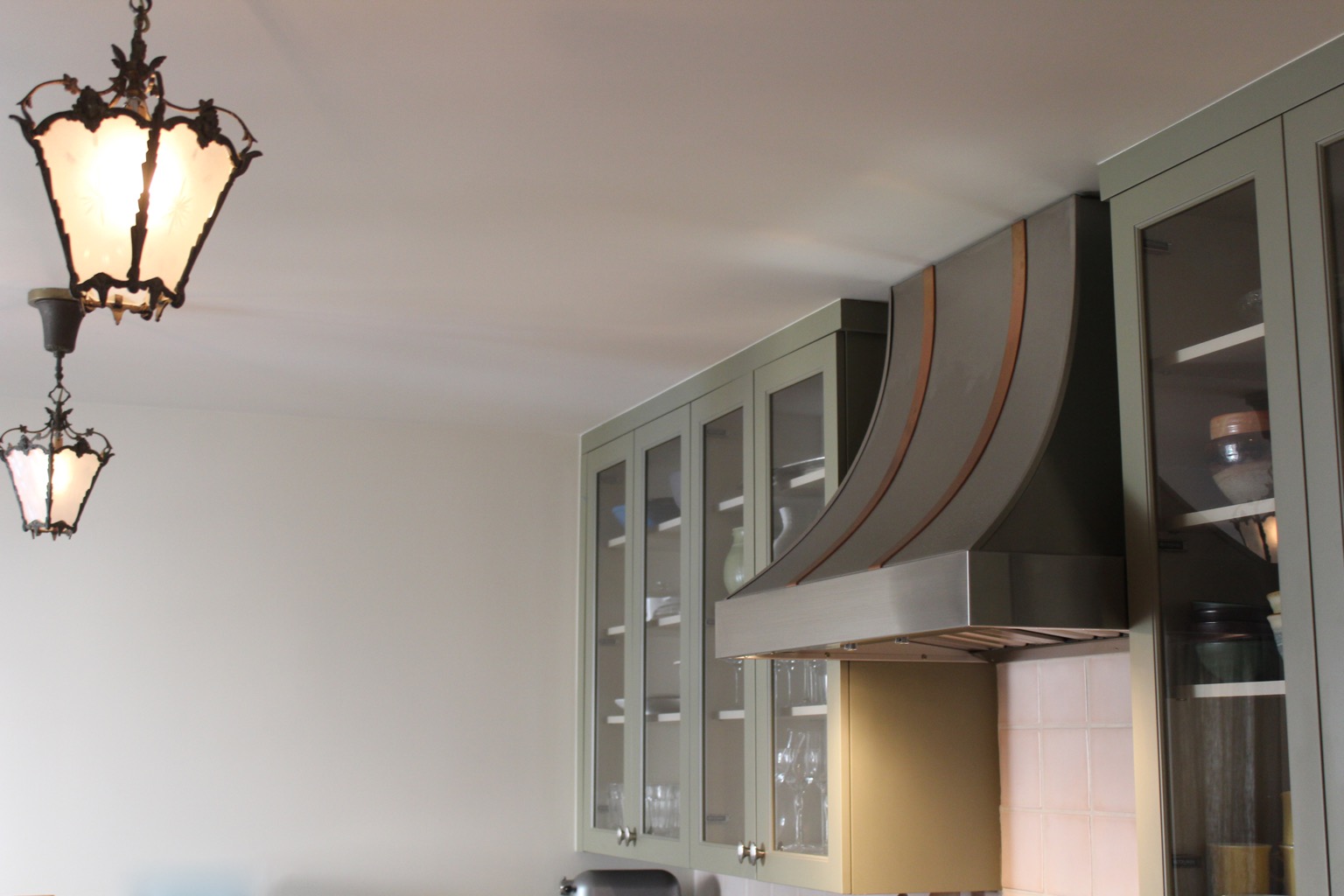
The chimney is stainless steel and copper. A pair of brass lanterns with etched glass from the 1960’s found at a flea market.
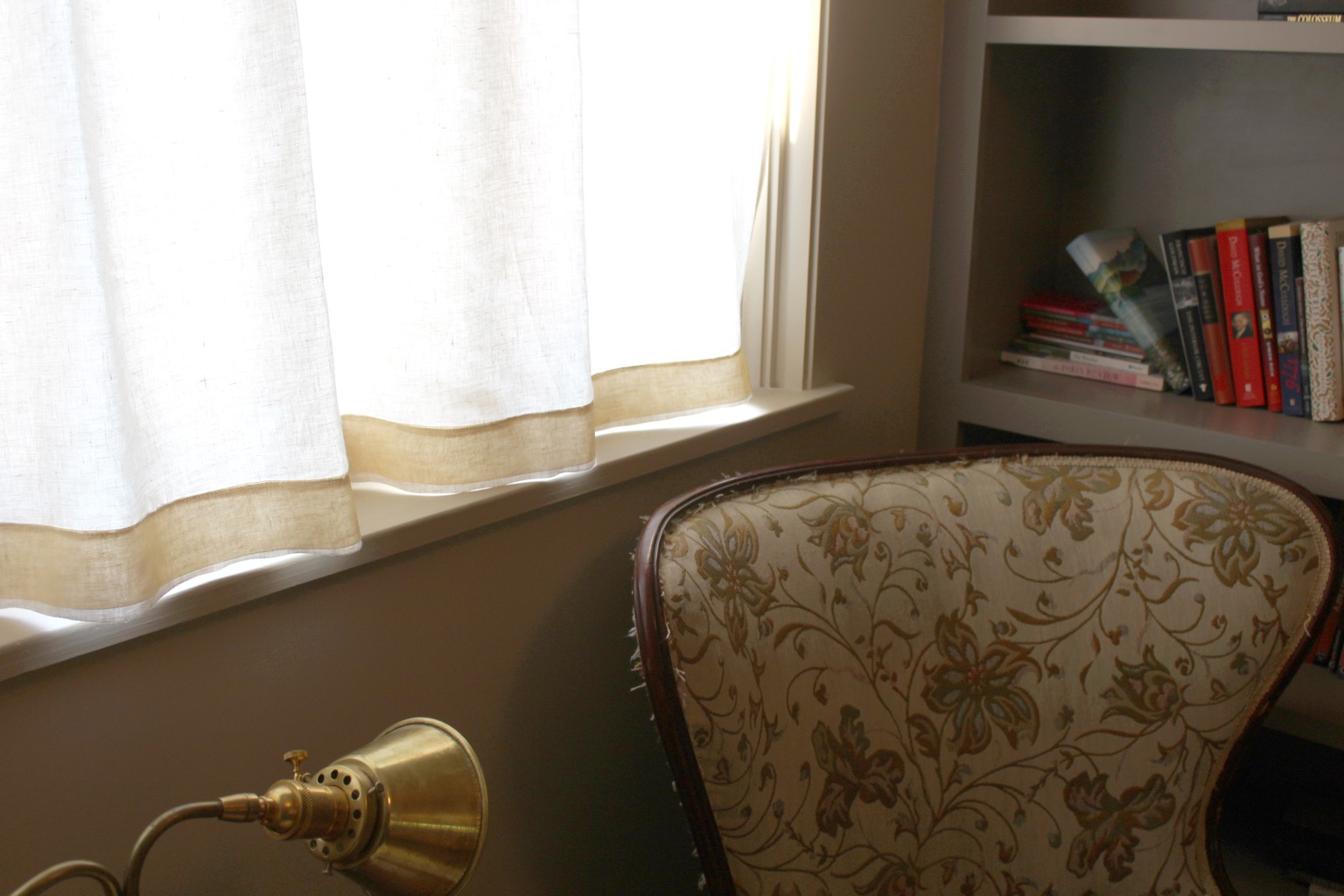
The client’s goose neck desk lamp rewired with uno sockets and brass shades in the library with vintage wingback chairs as found from Simeona Leona in the original fabric. Linen curtain panel with 19th C french horsehair ribbon detail.
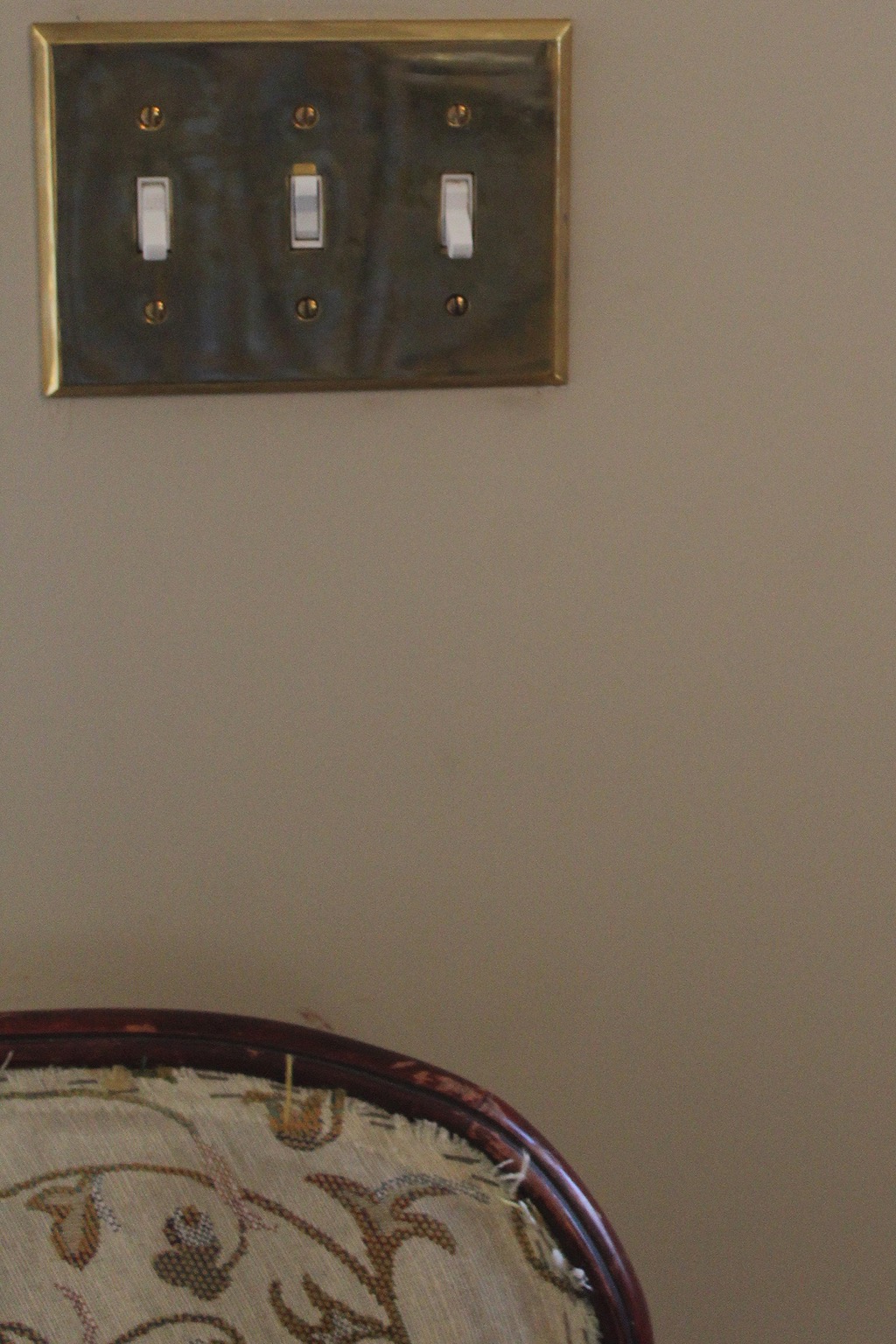
Mixing metals– unlacquered brass hardware covers mix with porcelain and crystal door nobs in brushed nickel. Living room, dining room library and the hallways are painted in Dunn-Edwards Coshise.
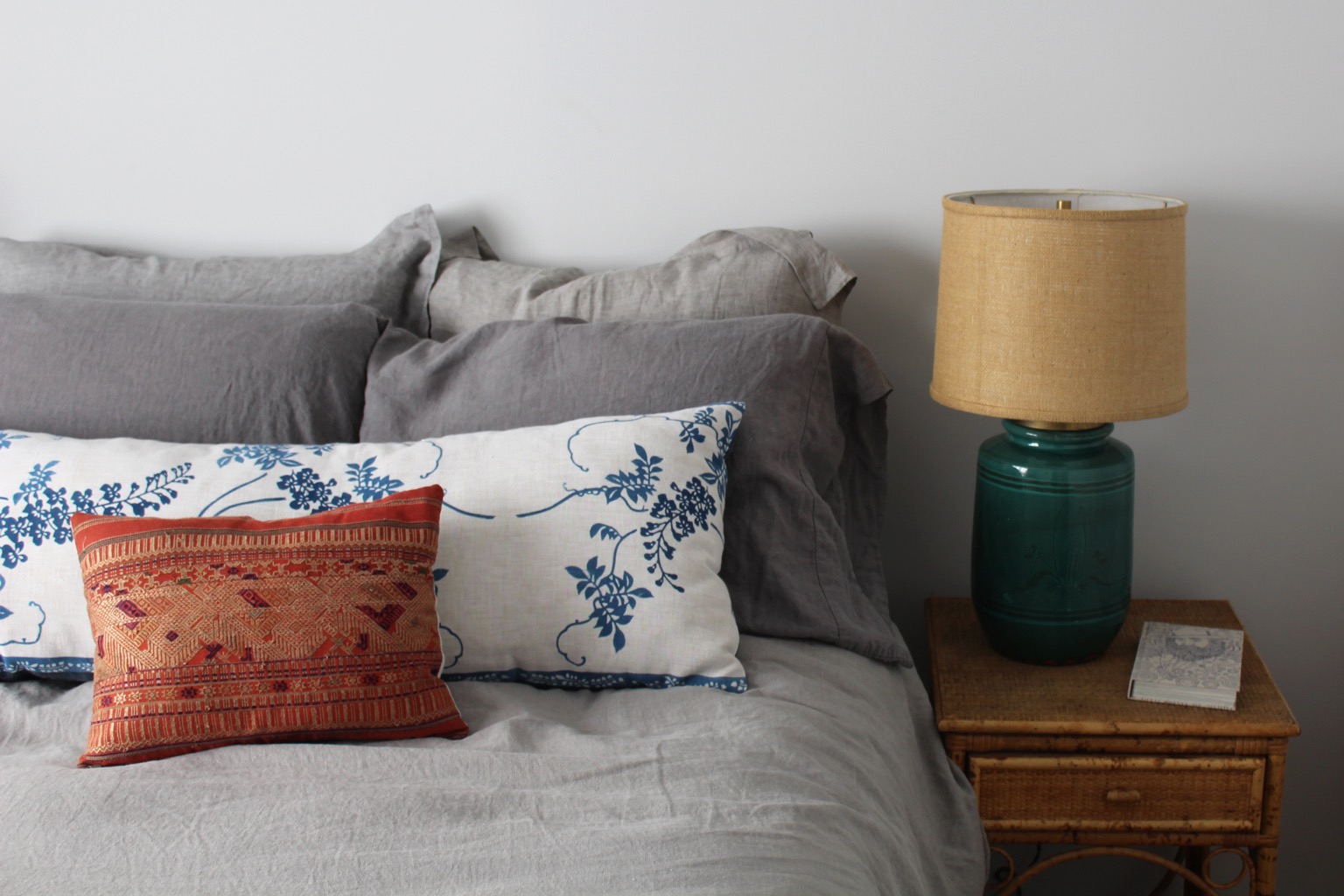
Guest bedroom. Vintage rattan and bamboo side tables from Design Utopia. The vintage-y Chinese jars were French wired into lamps and can be ordered from Simeona Leona as well as pillows–vintage Japanese block print and a Laotian piecework pillow.
Besides the nobel art of getting things done, there is the nobel art of leaving things undone. The wisdom of life consists in the elimination of the non essentials. –Lin Yutang
There is something about this quote of Lin Yutang’s our images of the convent of the Basilica of St Francis that work together. Assisi left a wonderful reassurance in the goodness of life even with all of it’s extremes.
I’ve been researching the narratives of Miao Embroideries. This one I sourced in China. I’m still working on the narrative so I’m going to write about some technical aspects of the embroidery.
This is a reverse appliqué with a plaited couching stitch finish. The off white is the background fabric. The pattern would have been drawn or stenciled on the darker fabric of the foreground, then cut out. The cut-out darker fabric was then sewn directly to the white with a running stitch along the edge of the pattern–a basic running stitch because later it is covered with the plaiting.
The cord or plaiting is made from an inner thread like raffia or hemp and then wound with silk to make the plait. After this is all done, it is couch stitched over the running stitch made earlier around the edge of the fabric.
As for the design, I used to think they were clouds. But now, I think the pattern is based on the butterfly–butterfly antenna and the trailing floating pattern of their flying from one place to another. More about that as soon as I do a little bit more writing. Spend some time staring at the images and let me know what you think. Perhaps someone has written about a similar pattern, let me know.
The embroidery is 25 x 27 not including surrounding frame.
A detail of the fraying edge of the darker cut fabric and the couching stitch.
When I’m shopping for vintage and antique textiles, I organize my shopping by color themes. I like the colors to at least wink at each other, if they don’t speak. These are Geija sleeve textiles, a Dong dowry textile and a hand embroidered Hmong piece. Check out our newest items at PontiusShop.
Alta May was my great grandmother who did the original cotton on cotton embroidery sometime in the 1920’s. This is a newly made pillow that I have over-dyed and piece worked — adding a hand embroidered text a Sapho fragment: Someone will remember us, I say, in another time.
The text is from Mina Loy’s Poem, There is No Life or Death. Read the complete poem and some of her others over here. This pillow is from a group of text pillows–done free-hand on my sewing machine. The fabric is dark oatmeal linen and the thread is this fantastic pink from my favorite embroidery shop, Des Fils et une Aiguille, in Paris. The other pillows in the group, not shown, are similar and the quotes are at the very bottom of this page.
To see some of my past blogs on Mina Loy, click one or both of those links. 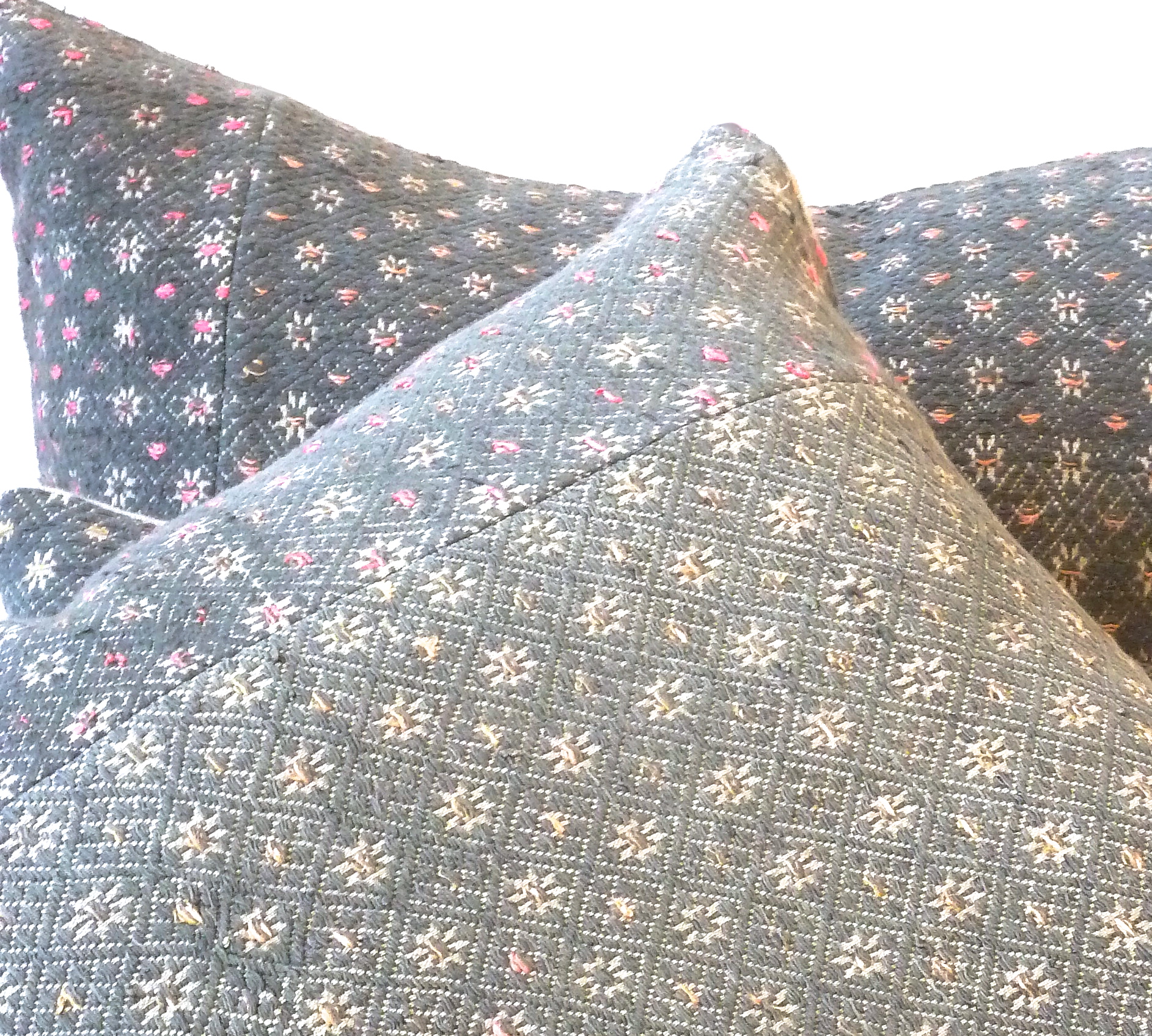
The group of Grey Hmong Wedding Quilt Pillows— I just finished them this week– have accent colors from a true pink to a pale peach.
Here are some things that I am working on this week: fantastic chain stitch Hmong embroidery– silk on cotton–combined with a hand loomed hemp. They will be part of our Kaili Pillow Collection at Pontius SHOP –Our Kaili Collection is named after Kaili City, China– the capitol of the Miao people and other ethnic minorities who are known for their exquisite well crafted embroidered textiles.
This fragment jumped off the shelf at me when I looking for Fez Textiles in Paris this past June. Probably Greek late 18th to Early 19th C– a fabulous piece of inspiration- long and narrow with 3 odd but delightful patterns embroidered in silk and metallic threads on a homespun linen. Bellow are details of the embroidery.

